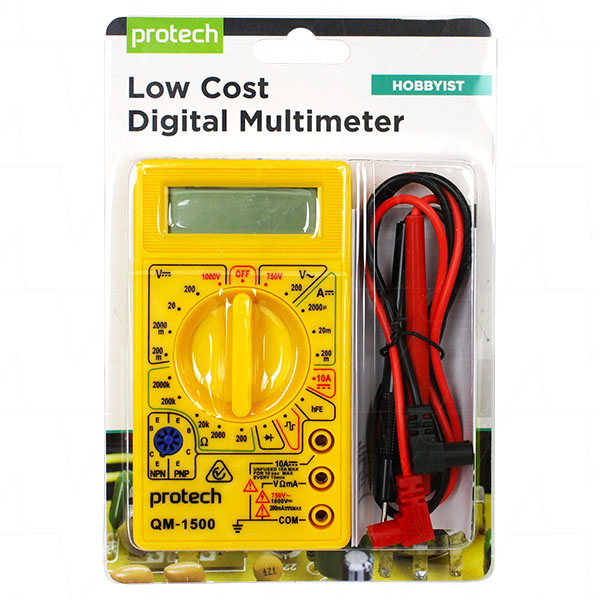Digitech Qm 1500 Manual

Using a multimeter This guide starts off with the basics of a meter, proceeds to give a thorough specification for our example meter, then explains how to make measurements, and finishes up with some hints and notes. The example meter that we are demonstrating is typical of many economical digital multimeters that you can purchase, this guide will be useful for all these meters. This guide is concentrating on how to use your multimeter. It all came about, frankly, when we started giving away free multimeters to our design clients - and we realised there was no easy instruction manual for a meter - all that was supplied was a list of (sometimes non-sensical) warnings, and a specification list.
Admittedly we have a specification list here, but we tell you to ignore it if it does not make sense, and we have reduced the warnings to the three that we think really matter. We can supply the meter direct - but our costs are a little higher than the big retailers. Recently the same meter has availble only in a dark grey colour case.
There is also a cheaper version in a plain rectangular case with no rubber holster - great for students, or a second meter. We charge $9 to mail out these meters within Australia - (email for a quote if you want it sent overseas, but honestly it probably isn't worth it, we get charged about $40+ here in Australia to ship anything internationally). Model: Warnings Do not rotate the dial while the meter is connected to a circuit - you may rotate it through a current range, short circuiting the probes and damaging either the meter or the circuit. Respect the circuitry you are working on - If you touch exposed metal, or cause a short circuit, or connect to high voltage, you may expose yourself to hazard - or damage the circuit or your meter.
Alien skin exposure 7 keygen. Measuring the short circuit current of a battery or power supply is usually not safe - it is likely to damage the meter or battery and possibly cause the battery to overheat so much that it may be dangerous. You should read all the other important warnings in the instructions that come with your meter, you may even find, somewhere, the author's favourite comical mis-translated warning: 'Do not run the equipment under water or in water shower for fun or any other reason'. Testing batteries As tersely explained to the left, a battery can be tested, seperately, using a multimeter - but is best tested (supplying power) in the equipment.
Important safety information, refer to the operating manual. Google sketchup 8 download free. Dangerous voltage may be present. Test leads Electric Rating 1500V, 10A 1 couple. This guide is concentrating on how to use your multimeter. It all came about, frankly, when we started giving away free multimeters to our design clients - and we realised there was no easy instruction manual for a meter - all that was supplied was a list of (sometimes non-sensical) warnings, and a specification list.
This is difficult for most people. An alternative is to buy a purpose built battery tester: This is just a meter with a resistor to draw power from the battery, so it is tested under load, as it should be. A simple cheap battery tester is (For - thank you for your help) 1.5V Batteries - A Fresh battery reads 1.56V, A battery is perhaps half used at 1.35V, and is pretty dead by the time it reaches 1.1V. (Matching figures for 9V: Full = 9.36V, Half = 8.1V, Dead = 6.6V). However, not every item is the same, and some equipment needs a battery with low internal impedance. The amount of current a battery can deliver is not reliably reflected by its open circuit terminal voltage. The best way to check, if in doubt, is to measure battery voltage while the equipment is running.